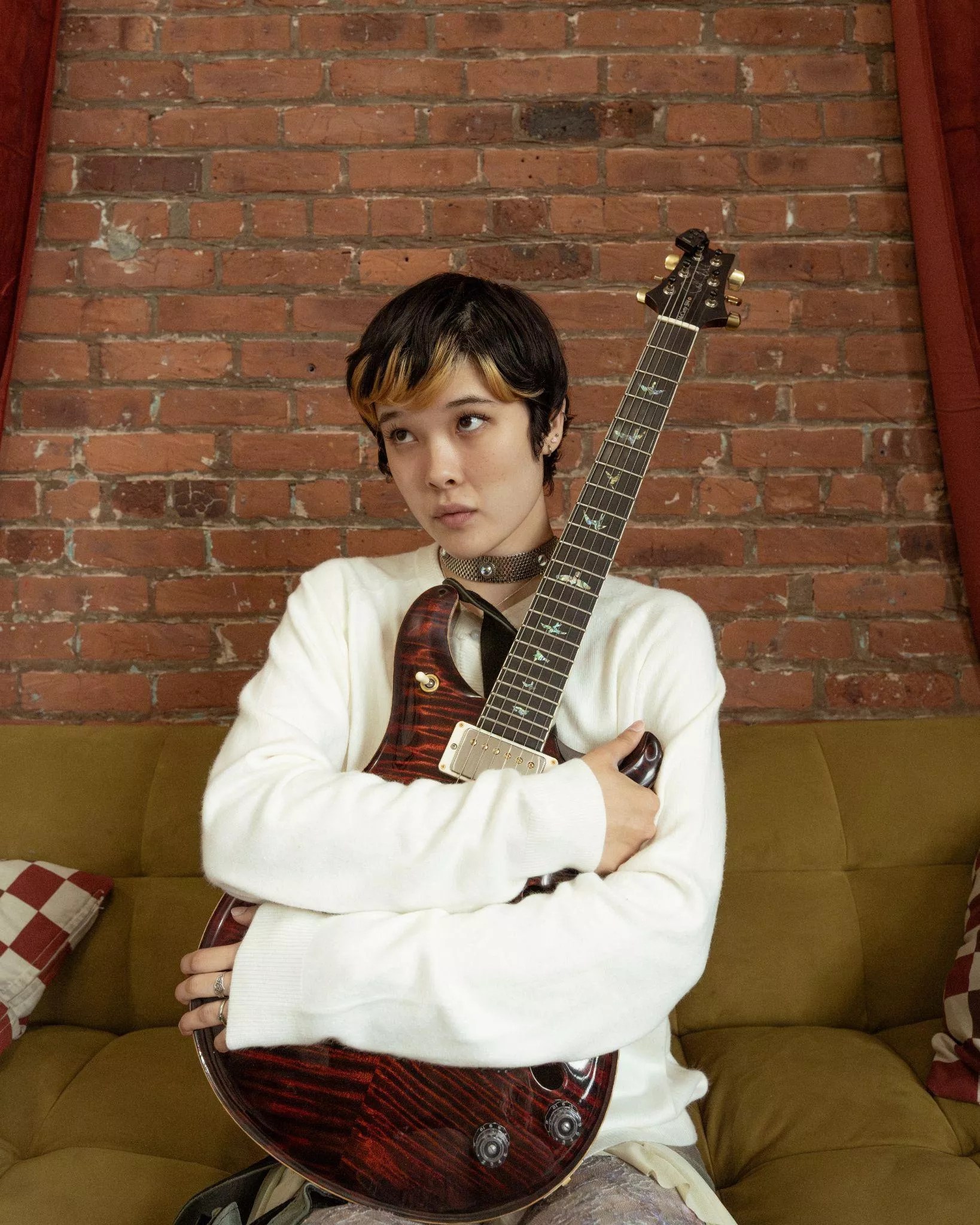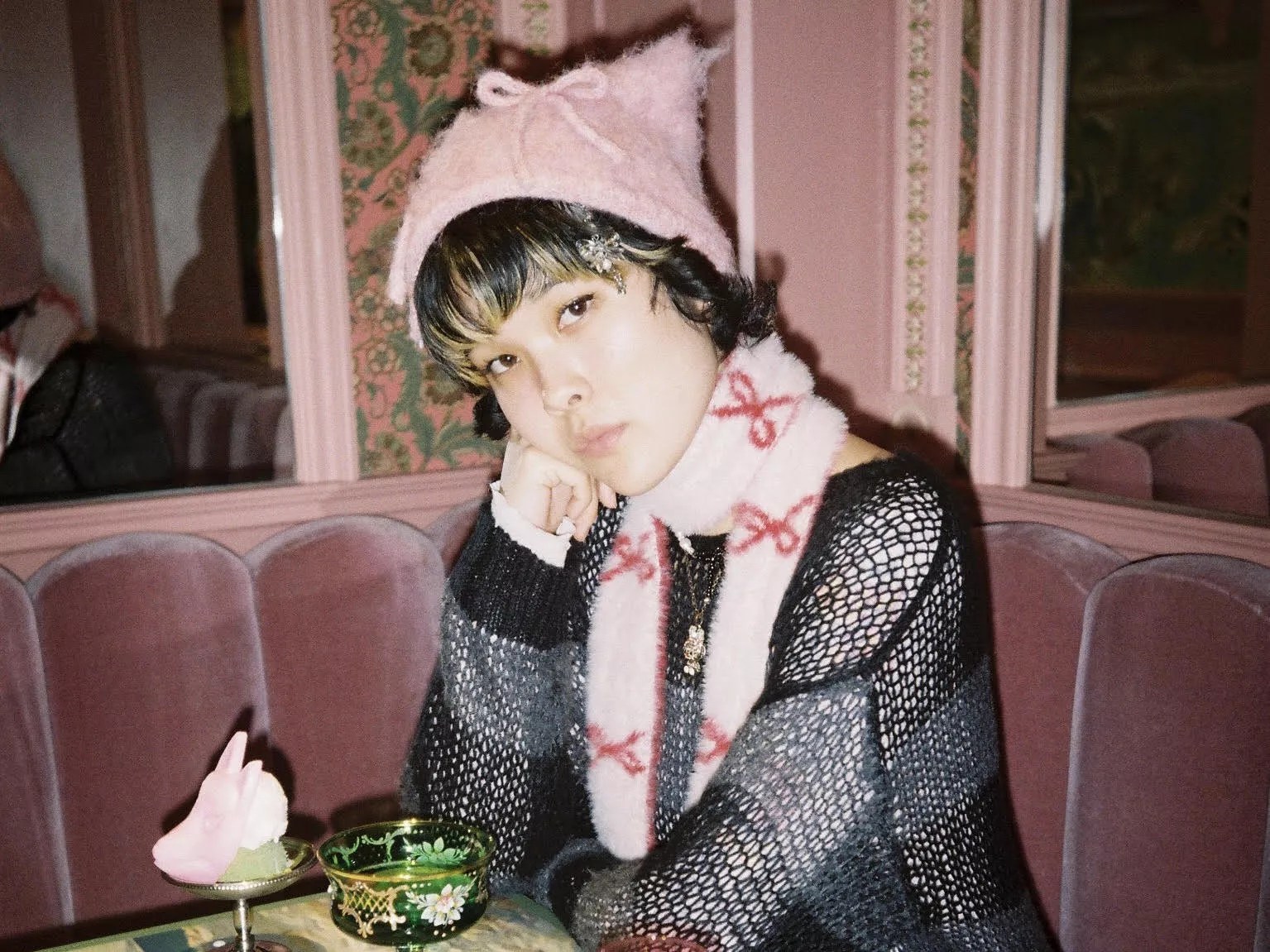
Alec Hirata

Audio By Carbonatix
Mei Semones is tough to pin down.
At 24, she wanders myriad jazz-laden streets, her affection for bossa nova considerable. Therefore, Antonio Carlos Jobim, Gilberto Gil and JoÁ£o Gilberto live in her six-string blood, as do Charlie Parker, John Coltrane, Thelonius Monk, Bud Powell, Wayne Shorter, Jaco Pastorius and, of course, Jim Hall and Wes Montgomery, two of the nimblest American maestros to ever wield her instrument of choice.
A cursory tour of her work draws surface parallels to Stereolab, her vocals reminiscent of LÁ¦titia Sadier’s: not a zillion-octave workout but a steady, ethereal loveliness over clean, sophisticated soundscapes. Like Sadier, Semones, too, sings multilingually, here leaping from Japanese to English in a seamless flow. “Sometimes certain words in one language will happen to fit better in a rhythm or melody,” she explains. “I grew up speaking both languages, so switching between the two feels natural.”
She cites Nirvana and Smashing Pumpkins as touchstones, and a recent performance at the Lincoln Center’s “Summer for the City” festival in New York found her showcasing her own music and somehow – with the same presence, voice, and guitar – The Breeders’ “Cannonball.” Not a jazz rearrangement but straight interpretation, “I know you, little libertine,” scuffle-scruff, drawling purls and all, re-created as if it had always been hers.
This year, make your gift count –
Invest in local news that matters.
Our work is funded by readers like you who make voluntary gifts because they value our work and want to see it continue. Make a contribution today to help us reach our $30,000 goal!

Jazzy indie rocker Mei Semones.
Alec Hirata
As an overall hybrid, her style is luminescent. But defining it simply can break a brain. Semones understands that and has thus coined her all-encompassing genus.
“A lot of people ask you what type of music you make, and I have to have a short, concise answer,” she explains. “So I just say ‘jazz-influenced indie J-pop,’ which gets some of the idea across.
“As for the music itself, it comes from listening to and studying music that I love. For jazz, it was a lot of the greats I was introduced to when I started studying it in high school. For rock, it was discovering stuff on my own in middle school. And bossa nova is really comforting for me; I’m not exactly sure what it is, but it feels warm and happy. That’s what drew me to it: the feeling. There are interesting rhythms going on, too, a lot of interesting chords and melody.
“So my style is just a mix of the different types of music that I’m passionate about and have influenced me. I think what I look for in musicians or artists is individuality, in that they sound like themselves and only like themselves. It’s something that all these different musicians have in common: having a distinct voice.”
Semones began honing hers during her Ann Arbor, Mich., childhood, leaving piano behind after watching “Back to the Future’s” Marty McFly yank Chuck Berry’s “Johnny B. Goode” from his cherry-red Gibson ES-345 during the 1955 “Enchantment Under the Sea” dance. “I guess you guys aren’t ready for that yet,” the 20th-century time-traveler – unknowingly leaping decades yet again – famously prophesied to agape Hill Valley High School onlookers. “But your kids are gonna love it.”
Semones was way ahead of him.
“I thought that was really cool,” she recalls, “and I wanted to do it.”
So she did it, eventually joining the jazz program at Ann Arbor’s Community High School and cutting her teeth at public gigs. Upon graduating in 2018, she moved to Boston and attended Berklee College of Music, where she truly came into her own, networking with musicians and meeting the people who’d one day comprise her group.
Through Berklee peers Nicholas Lussier and Micah Rubin, she met Charles Dahlke, their bandmate in The Brazen Youth. Semones often supported the trio onstage and worked sessions at Dahlke’s Ashlawn Recording Company in rural Lyme, Conn., contributing bass and guitar as “certified baddie” for Reggie Pearl’s “Regicide” (2020) and to Mackenzie Morris’ “The Pond” (2022), among others.
“I really enjoyed Berklee because there was a lot of time to practice and learn and a lot of interesting courses,” Semones says. “I was surrounded by a lot of songwriters and artists, and that inspired me to try to write my own songs, as well.”
Her moment came in 2020 as she assembled what became her first single. It began as an instrumental to be bolstered by her guitar melody. However, while replicating the melody vocally to accompany her chords, she realized lyrics could work just as well. So she poured a linguistic mix of Japanese and English, and “Hfoas” was born. In demo form, it’s stark, but the fledgling Mei Semones sound still bursts to exuberant life.
However, mixer and multi-instrumentalist Berklee friend Noah Leong (they’d met during their first week of studies, and he remains integral musically) felt the track needed something more. With Semones’ approval, he added a string arrangement, giving “Hfoas” a stirring orchestral voice, now a compositional signature.
Leong details the construction:
“The first half of the song was recorded live and has a more bossa nova sound to it; here, the viola plays a more auxiliary role with fills and guide tone lines. When we got to the second half, hearing how it sort of opens up with a more indie/alternative sound, I thought it would be neat to layer myself plucking the strings randomly with added delay and reverb effects to create a buildup to the outro. At that point, we had done so much layering, I thought, ‘Why not create a layered string section sound in the outro with a full arrangement?'”
“I loved it so much,” Semones says. “It fit well with my songwriting style, and it and he have been such a big part of my music since.”
Leong later enlisted violinist Claudius Agrippa to help reinforce the continued attack. “We had a similar approach to string-writing,” Leong explains, “so the interplay between the strings as solo auxiliary ‘horn’ players, along with the layered string section sound, is something we’ve kept doing. Mei’s music is something we’re all very passionate about.” Semones proved quite prolific in 2022 – the year she graduated from Berklee and moved to New York – issuing three singles, one double-single and two EPs between January and October.
The heartbreaking “Wakare No Kotoba” (“Parting Words”) followed in 2023, with the “Kabutomushi” (Japanese rhinoceros beetle) and “Dangomushi” (an isopod, what kids call “roly polies”) cuts arriving in 2024. She recorded the latter at Ashlawn with Dahlke, who says of the track’s swerving plucks and blood-rush soar, “It really set the tone of how all these different things were going to play into each other.”
This made it natural for Semones to return for “Animaru” (“Animal”), her full-length debut released by Bayonet Records in May. It came together in Ashlawn’s acoustically generous barn – the operation’s heart – amid a pastoral menagerie of genuine quadrupeds like dogs, cats, cows, goats, and horses. She brought her musicians and songs; Dahlke determined mic placement and the ideal space.
“We were just trying to capture the best sound that we could get,” Semones says, “with Charlie finding the best way to capture it in the most authentic way.”
“I’ve always been so blown away watching Mei and her band perform live,” Dahlke adds. “Going into this record, a big goal of ours was to preserve that live energy. Each stroke of artistry from Mei is done with so much intention, and having the honor to watch her grow as an artist and person has been really special.”
Everyone toiled over a two-week span, emerging with “Dangomushi’s” realized promise writ large. “Animaru’s” mesh of anthropomorphism and memory complemented Semones’ ardent blend of formative noises. The title’s perfect, as beasts of all stripes run wild here: birds, mice, pill bugs, snakes, rabbits, etc. “Zarigani” (“Crayfish”) evokes childhood imagery she shares with her twin sister in a declaration of love. “At our house in Michigan, there were woods with a creek we would play in when we were little,” she recalls. “We’d catch crayfish in the creek and put them back.”
Semones’ mother designed a “rat with wings” for the cover to commemorate the same-titled track – which immortalizes an unnamed person, though the composer insists, “It’s kind of written about an experience where you think someone is really nice and, at first, you see these beautiful wings, like angel wings, and then you find out what they’re actually attached to: a rat. In that sense, it’s a rude song about someone. But I will say that’s not really the energy I want to be putting out in the world. Also, I like rats. I relate to them in some way. It’s not all negative.”
Overall, “Animaru” confidently marries jazz to louder, faster ambitions. Bittersweet elegance reigns on “Norwegian Shag,” with its lyrical nod to Jaco Pastorius’ equally soothing “Portrait of Tracy” following, as it does, upright bassist Noam Tanzer’s pairing with Semones on the unadorned “Donguri” (“Acorns”). Conversely, the title track and “I Can Do What I Want” – a “maximalist song,” Semones calls it – revels in beauty and defiance, guitars, strings and Ransom McCafferty’s thoroughly bashed drums diving ’round and betwixt, proving its very proclamation.
These jazz and alt leanings coexist stunningly on tracks like “Dumb Feeling,” splashed upon daubs of Wes Montgomery’s “Polka Dots and Moonbeams” and Charlie Parker’s “All the Things You Are / ’52nd Street’ Theme.” “The initial inspiration came from taking different pieces of solos and transcriptions that I liked and putting them together in a new context,” she says.
For verbal inspiration, Semones turned to Nirvana’s Kurt Cobain, specifically 1993’s “Dumb.” “What I take away from (those) lyrics is that if I do feel like being happy, there is a sense of being dumb, almost,” she laughs. “That’s the feeling I’m describing in the song: being really happy and dumb, having to draw myself back into reality in moments where I feel I’m too happy.”
“Mei and I are both big Nirvana fans,” Dahlke says, “and I think Mei’s instinct to lean into the rock a little more on this record make for a really interesting fusion of genres.”
Pitchfork thought so, too, awarding “Animaru” a 7.5. Extolling her music as a “breezily, utterly idiosyncratic mixture,” The New York Times’ Jon Pareles called her an artist to watch. CBS’ “The Late Show with Stephen Colbert” took that literally, airing a video last month of Semones’ band conjuring “Dumb Feeling” from The Bridge Studio in South Williamsburg, Brooklyn.
The reception’s been nice, but Semones has other priorities.
“It feels good, I guess,” she says. “I’m not so concerned about the attention as I am about the music and if it’s good and if it’s reaching people and helping them in some way. That’s what I hope the most.”
Mei Semones and her band perform at 8 p.m. Tuesday, July 15, at Valley Bar, 130 N. Central Ave., Phoenix. Tickets are $23.30.